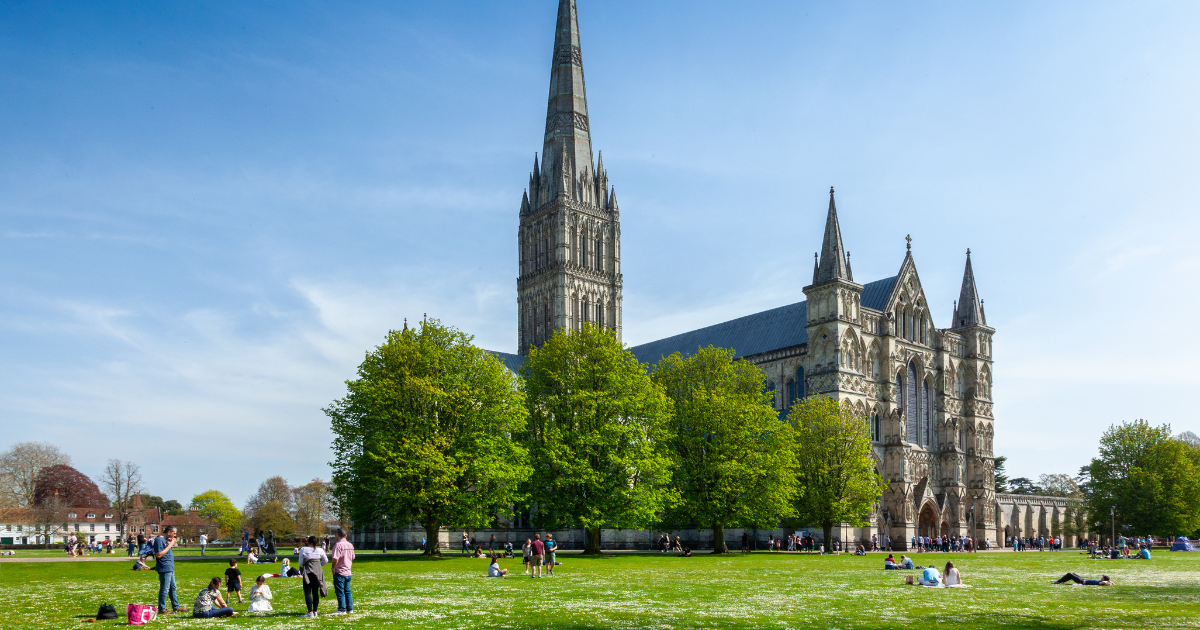Top places to see spring flowers in and around England’s Historic Cities

Spring is well and truly here and with the weather slowly staring to get warmer, it’s never been a better time to get outside and explore. So if you are visiting one of England’s Historic cities this spring why not take some time admiring some of the beautiful flowers around the city.
To make it easy for you, we’ve put together a list of top places to see the flowers this spring.
Lincoln
Brightwater Gardens
Brightwater Gardens is a collection of formal and naturalistic gardens, surrounded by open countryside and magnificent views. Lovingly created and developed over the last 20 years, each area is full of different flowers, plants and trees. Grass paths lead through prairie borders and areas of wildflower areas which include native orchids. You can follow the path into the woodland, which has been planted with trees and naturalising spring bulbs to create a lovely ¼ mile walk.
For more Information click here
Doddington Hall
For many, the gardens at Doddington are just as spectacular as the Hall itself. Remaining faithful to the original Elizabethan layout, mellow walls provide the framework for the formal East Front and West Gardens. Beyond the West Gardens begin the lovingly restored Wild Gardens. Over the years, the grounds have been restored, nurtured and developed to their fullest potential. No matter when you visit, the gardens at Doddington are always blooming – and with each season comes something different to see.
For more information click here
Salisbury
Salisbury Cathedral Close
When visiting Salisbury, why not take a short walk around the Cathedral Close. Located in the heart of the city, this walk soaks up the atmosphere and the history of this very special place, which has been home to some famous former residents.
At 80 acres, this is Britain’s largest Cathedral Close and reflects architectural styles from the 13th century to the 20th century. Not only is there a range of beautiful architecture to admire, but there’s plenty of opportunities to spot a range of beautiful spring flowers.
For more information click here
Durham
Durham University’s Botanic Garden
Spring is a fantastic time for bird spotting and there are plenty to discover at Durham University’s Botanic Garden located in Durham City. Special bird spotting sheets are available for people of all ages. Meanwhile, the woods surrounding the Botanic Garden boast one of the finest displays of bluebells in the region in May.
Entrance to the bluebell wood is free. Admission charges apply to the Botanic Garden; £5 for adults, £4.50 for concessions and free for carers and children aged 16 and under.
For more information click here
Crook Hall Gardens
Crook Hall Gardens are a characterful gardens on the edge of Durham city, set against the backdrop of a medieval hall, now owned by The National Trust. This stunning medieval Grade I listed Crook Hall manor house surrounded by glorious gardens is just minutes from Durham city’s busy market place.
Explore the secret walled garden, Shakespeare garden, Cathedral garden, silver and white garden, moat pool and meadow with maze to name but a few of the beautiful garden areas at Crook Hall. Each garden has it’s own history, with some been on the site of Crook Hall for centuries. After exploring the gardens enjoy light bites and a refreshing drink in the Garden Gate Café.
For more information click here
Lancaster
Crook O’ Lune
If you are visiting Lancaster this spring make sure you take a trip to Crook O’Lune, a circular riverside walk along the River Lune. Not only is there stunning views across the valley but there is also a range of beautiful spring flowers on display. This beautiful riverside walk is in the shape of a figure-8 and can easily be done in two shorter halves for those looking for a slightly shorter walk. Along the way there is also a picnic site which is a popular destination in the warmer months, so don’t forget to pack some tasty food.
For more information click here
Heysham Moss
Heysham Moss is home to a mosaic of habitats including woodland, scrub, wet grassland and raised bog making it a biodiverse hotspot. For the reason, plant lovers and budding botanists will love exploring this important area for wildlife. Not only is there a range of beautiful flowers to spot but Heysham Moss is also home to the sights and sounds of various wildlife including rare butterflies.
For more information click here